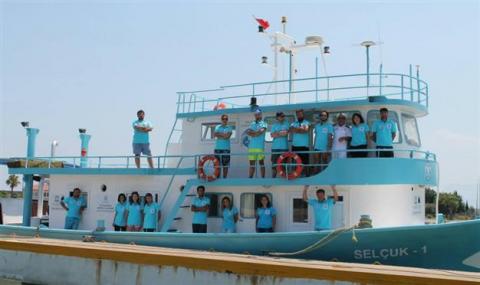New underwater technology explores Byzantine past

Underwater works on the Aegean and Mediterranean coastline are bringing to light the remains of ancient wreckage. Among them is the Tabak Vessel, highlighting Byzantine plate commerce Underwater archaeological work in the Mediterranean has uncovered the remains of a port from the Bronze Age, along with 12 shipwrecks estimated to be 2,500 years old.
The remains of these finds are being examined at Selçuk Universityâs Research Center, which is working to discover the underwater archaeological richness of the Mediterranean along with teams from Warsaw and Naples and the support of the Culture and Tourism Ministry.
The recent finds are attributed to Turkeyâs first underwater archaeological research vessel, the Selçuk-1, in Antalya, which was launched by Selçuk University on June 17.
With seven underwater cameras, sonar scanner systems, diving equipment, a lifter and a 10-person team, the vessel is the only one of its kind in the field in Turkey.
The Tabak (Plate) Wreckage Rescue Excavation, under the scientific consultancy of Harun ÃzdaÅ of Dokuz Eylül University and Hakan Ãniz of Selçuk University, is the only independent underwater archaeological excavation on the Turkish coastline.
The wreckage was found off the coast of Antalya and dates back to the Eastern Roman era, showing the extent of Byzantium plate export. The excavation has unearthed many plates, which can provide important detailed information about maritime commerce in the era.
Researchers have also continued working on warships that sank off of the Ãanakkale coast, and other sunken ships that hold importance for Ãanakkaleâs maritime history, in anticipation of the upcoming 100th anniversary of the naval...
- Log in to post comments










